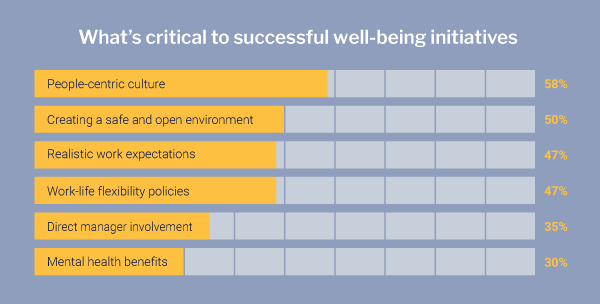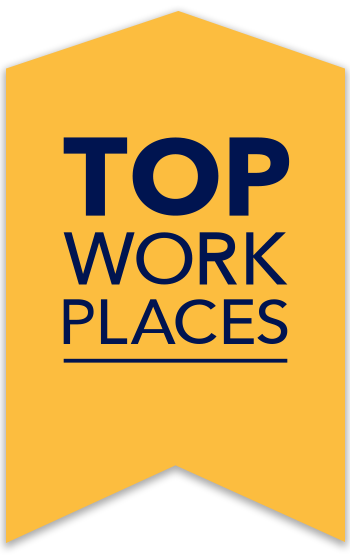Employee burnout has worsened in recent years due to the stress and uncertainty caused by the pandemic, the economy, and more. It’s no coincidence turnover rates are on the rise too. Working from home poses new challenges and amplifies existing issues. Now’s the time for organizations with remote or hybrid workforces to watch for the symptoms of work-from-home burnout.
Recognizing burnout in remote employees
Although there is some overlap, the signs of remote working burnout vary from one person to the next. This makes sense because working from home can be isolating. Here are some signs of work-from-home burnout:
- Lack of energy and enthusiasm
- Cynical or negative attitude
- Lower productivity
- Lack of concentration
- General irritability
Determining how to prevent work-from-home burnout in employees will help organizations reverse those problems, retain talent, and boost morale.
8 steps to prevent burnout in remote employees
Employees need new types of benefits in the new world of working from home. The ping pong tables and free snacks of yesterday have been replaced with emotionally conscious well-being programs to support employees in fresh, innovative ways. The best remote companies have done their homework and evolved to provide competitive well-being programs that maximize motivation and prevent work-from-home burnout in employees.
Being proactive about employee burnout prevention, especially among remote employees, can protect your organization’s culture and the bottom line. Let’s explore eight tips to avoid work-from-home burnout:
1. Implement a communication platform
Feeling disconnected or isolated is one of the most common causes of burnout for remote employees, especially those in solitary roles. Implementing a communication platform is one of the best ways to improve company culture and prevent burnout in a virtual work environment.
Communication platforms help employees avoid work-from-home burnout by connecting them with their managers and company leaders. They’re also great for promoting ideas, initiatives, recognition, and company values.
Energage research identified several components of a successful well-being initiative that minimizes burnout, most of which are centered around communication:

Learn more: How to Improve Workplace Communication
2. Set work boundaries
One of the most challenging things about working from home is the inability to unplug at the end of the workday. In a recent burnout study, Indeed reported that more than half of remote employees are working more now than they were a few years ago. The research also revealed that nearly 40 percent of remote workers feel pressure from managers to work longer hours.
Leaders and managers should ensure their teams establish healthy boundaries between work and personal life. Companies with the best work-life balance also encourage tailored work schedules and workplace flexibility. They respect these boundaries and lead by example to show their support.
3. Create a daily structure for employees
Next on the list of tips for how to prevent burnout in remote employees is to create a daily structure. All employees, whether remote or not, need structure. This could include initiatives like calendar blocking or regularly scheduled check-ins with colleagues, team members, and managers. These opportunities to share progress reports and project timelines help employees focus on their goals and hold themselves accountable.
4. Use a flex schedule
Managers can also help employees avoid work-from-home burnout by encouraging flexible hours. Giving employees the freedom to flex their schedules allows them to work when they are most productive. Workplace flexibility best practices achieve even better when combined with boundary-setting, communication, and structure.
5. Schedule touch-base meetings with team members
More than 40 percent of remote workers have said they miss in-person meetings and the professional and social benefits they provide.
Accessibility is one of the qualities of a good manager, which is why your remote work burnout prevention plan should include regular touch-base meetings between managers, employees, and teams. Even short but frequent meetings can boost remote employee engagement.
Remote workers can feel overlooked when they lose a sense of connection. Recurring 1:1 meetings are an excellent way for managers and employees to check in, review progress, work through concerns, and discuss development.
Team syncs offer the opportunity for alignment, expectation setting, updates, employee recognition, and celebrations. Effective team meetings include a healthy mix of company topics and informal discussions.
6. Set up an online resource infrastructure
A downside to working from home is the inability to walk over to someone and ask a question. It’s even more challenging for remote employees to ask for help and access learning resources, which can hinder growth.
Remote employee burnout prevention should include online resource channels. These can be as simple as FAQs on a shared Google drive or as complex as a comprehensive digital employee handbook.
7. Focus on results over hours spent working
Work flexibility is one of the recurring themes of work-from-home burnout prevention. Employees can be easily overwhelmed when their work day focuses on the number of hours they sit at their desks vs. what they accomplish.
Avoid micromanaging remote workers by designing success metrics on delivery and output. Also, recognize that individuals have different working styles. What some employees can finish in an hour might take others the whole day to complete. Because of this, more efficient remote workers should not be forced to sit at the computer, clocking hours if their output has already been met.
8. Offer self-help perks
The final tip for avoiding work-from-home burnout is to offer self-help perks. Choosing meaningful benefits will encourage employees to achieve a better work-life balance and reduce health-related stressors. Examples include medical insurance with mental health benefits and other perks such as gym memberships, restaurant or spa gift cards, additional paid time off, and wellness days.
In addition to preventing work-from-home burnout, benefits that incorporate well-being and self-perks can improve employee recruitment and retention efforts.
See the Top Workplaces with the Best Job Benefits.
Ensure your company is a Top Workplace
Companies that model their work structure to avoid burnout, including remote burnout, can earn Top Workplaces employer recognition. These award-winning organizations lead with a people-first culture that empowers employees, drives innovation, and delivers business results. Top Workplaces are determined by a single, research-backed employee engagement survey that qualifies companies for year-round awards.
The Top Workplaces program highlights organizations nationwide that create a desirable work culture, empower employees, lead industry innovation, and forge the movement towards more transparent business practices based on one short employee feedback survey.
Top Workplaces employer recognition is a powerful differentiator that helps companies to improve employee recruitment and attract top talent.
See the Top Workplaces for Employee Well-Being awards.
See the Top Workplaces for Compensation & Benefits awards.
If your company is proud of its employee well-being and benefits initiatives, get recognized for it! Nominate your organization for Top Workplaces, the employer recognition program that offers awards in 60+ regional markets and national awards for culture and industry excellence.

